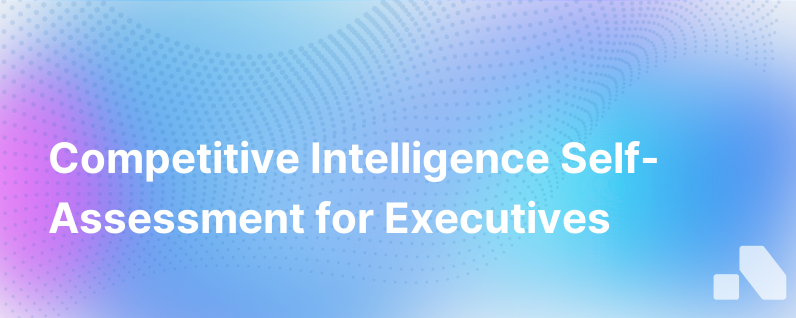
Visibility is everything in today’s rapidly changing business landscape. Equipped with competitive intelligence (CI), companies can navigate through the fog of uncertainty and carve out a distinct advantage. But how do we define competitive intelligence? And how can we assess our own effectiveness in implementing a CI strategy?
In this comprehensive guide, we’ll delve into the intricate world of competitive intelligence. You'll gain insights into what CI entails, its strategic importance, and methodology to evaluate your organization's CI initiatives.
Understanding Competitive Intelligence
Competitive intelligence refers to the process of gathering, analyzing, and interpreting actionable information regarding competitors, market trends, customer behavior, and other industry variables. This knowledge assists organizations in making informed strategic decisions, predicting competitor moves, and gaining a competitive edge in their market.
Simply put, a strong competitive intelligence strategy puts you in the driver's seat, enabling you to see the road ahead and maneuver accordingly.
The Value of Competitive Intelligence
A well-executed CI strategy provides an array of invaluable benefits. These include, but are not limited to, the ability to:
- Disrupt new market entries: By tracking competitor strategies, you can predict their roadmap and challenge their attempt to enter a new market or launch a product.
- Enhance product development: CI provides insights into competitor products, enabling you to create superior offerings.
- Craft effective marketing strategies: Through the understanding of competitor marketing tactics, you can create marketing plans that challenge competitor strategies and appeal to your target audience.
- Improve business planning: CI reduces uncertainty and exposes potential risks and opportunities, aiding in robust business planning.
Self-Assessing Your Competitive Intelligence Strategy
Before you revamp your CI strategy, it's essential to evaluate your current standings. The below diagnosis will help you gauge the effectiveness of your competitive intelligence apprehension and identify gaps in your CI strategy.
-
Awareness: Do you and your team understand the importance of competitive intelligence? Is there a robust mechanism to gather competitive insights?
-
Analytics: Is there an effective system to analyze raw competitive data and transform it into actionable intelligence?
-
Dissemination: Do all relevant stakeholders, including sales, marketing, product, and top management receive the distilled CI?
-
Actionability: Are decision-making processes influenced by the insights from the CI team? Are changes implemented promptly based on these insights?
-
Regular Updates: Is your CI data being updated frequently to keep up with the fast-paced business environment?
Take an honest approach while assessing your organization using the questions above. The results will pinpoint areas where your strategy excels, and where gaps exist.
Enhancing Competitive Intelligence effectiveness
Once you've self-assessed your CI strategy, the next step is to address identified deficiencies. Here are actionable recommendations to optimize your CI strategy.
Improve Awareness: Promote a CI-friendly culture whereby every employee understands its importance. Encourage employees across departments to share competitive insights.
Efficient Analytics: Modify your processing system to analyze raw data more effectively. Leverage software solutions that can sort, categorize, and dissect volumes of data and convert them into digestible forms.
Transparent Dissemination: Create a streamlined process for disseminating actionable intelligence to relevant stakeholders. Utilize collaborative platforms that transcend departmental silos.
Action-Oriented Approach: Ensure that the insights presented to decision-makers are actionable. Highlight key findings and suggest potential strategies.
Regular Updating: CI is a continuous procedure. Ensure that your data is regularly updated, perhaps, by leveraging AI-driven tools that provide real-time competitive insights.
A tool like Aomni provides real-time account research and strategic insights, making CI data readily available and actionable for your team, leaving zero effort on your part.
Conclusion
In the rapidly evolving business world, competitive intelligence is not a luxury but a necessity. CI provides comprehensive insights into industry trends, competitive strategies, and market opportunities, paving the way for informed decision-making and strategic planning.
However, CI strategy's effectiveness is contingent on your approach towards awareness, data analytics, intelligence distribution, execution, and regular updating. By self-assessing your CI strategy, identifying gaps, and implementing changes, you can stay ahead of the curve and maintain a significant advantage over contenders.
Remember, a well-crafted CI strategy does not just help you keep up with the competition; it helps you anticipate and strategize for the future. With automated advanced tools like Aomni, your company's competitive intelligence can reach new heights, so you can stay a step ahead in your industry, no matter how quickly it evolves.